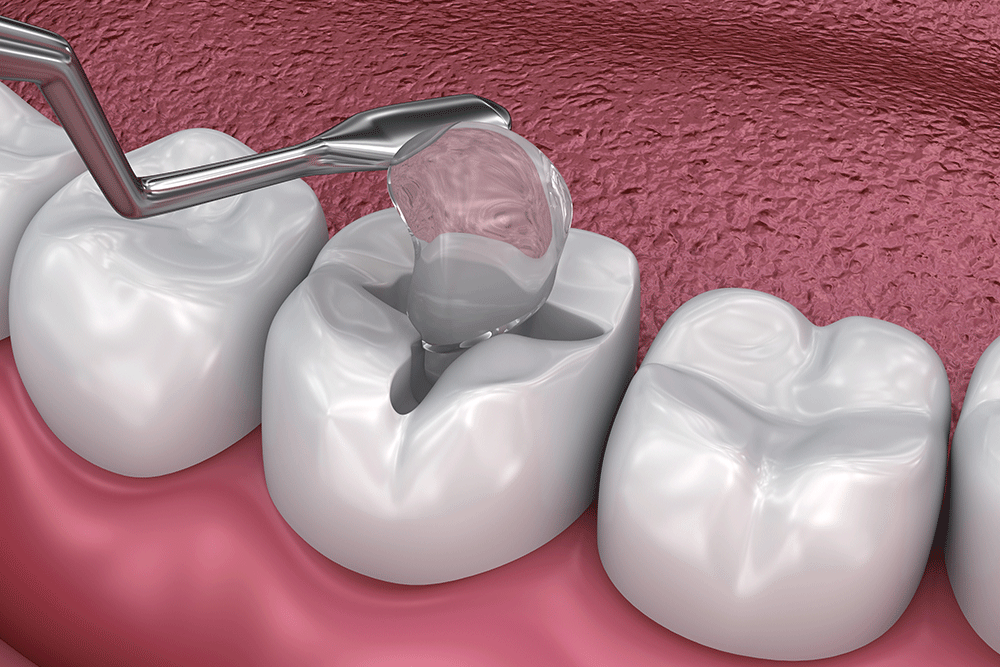
Hearing you need a cavity filled can feel a little intimidating. Fortunately, it is actually one of the simplest treatments in dentistry. Most people will need at least one filling during their lifetime, and the appointment is far less stressful than many expect.
With modern tools, numbing techniques, and durable materials, a cavity filling procedure helps restore your tooth while also preventing further decay. If you know the steps involved, you can walk into your appointment and leave knowing your smile is on the right track.
The Cavity Filling Procedure Explained
When you arrive for a filling, the dentist first checks the tooth with an exam and often an X-ray. This step helps determine the depth of decay and the best way to treat it.
After that, local anesthesia is used to numb the tooth, gum tissue, and surrounding area so you stay comfortable throughout the visit. In some cases, a thin rubber dam may be placed around the tooth to keep the space dry and prevent debris from reaching your throat.
The next stage of the dental filling procedure is removing the decay. Depending on the dentist, this can be done with a drill, a laser, or an air abrasion tool. Thanks to the anesthetic, you should not feel pain during this step. Once the decayed portion is gone, the dentist cleans the cavity thoroughly to remove bacteria and debris. Then, the tooth is ready for restoration.
At this point, the dentist places the chosen filling material into the space left behind. The filling is carefully shaped and polished so it naturally blends with the rest of your tooth. From start to finish, the actual treatment only takes a few minutes, though your appointment usually lasts about an hour to allow time for preparation, discussion, and aftercare instructions.
Materials Used in a Tooth Filling Procedure
Dentists use a variety of materials depending on your needs. Amalgam (a blend of metals) is highly durable and often used for molars that handle heavy chewing.
Other materials include composite resin, which is made from glass or quartz mixed with resin. It’s a popular option for visible areas that can be matched to the color of your teeth.
Gold fillings last for many years and stand up to wear, although they are more expensive. Dentists also use ceramic, which is tooth-colored and resists staining better than resin.
For a natural appearance without sacrificing strength, many choose composite dental fillings. They integrate naturally with surrounding teeth and are ideal for moderate chewing surfaces.
Recovery After a Cavity Filling
When the procedure is complete, your mouth will remain numb for a few hours. It is best to avoid eating hot foods or chewing with the treated tooth until sensation returns. Some people notice sensitivity to hot or cold foods for a few days, which usually fades on its own. If discomfort lingers, contact your dentist so adjustments can be made.
Fillings are long-lasting, but they do wear down over time. Amalgam and gold often last over a decade, while composite resin may need replacement sooner. If you grind your teeth, chew ice, or bite down on hard objects, fillings may chip or crack more quickly. See your dentist promptly if you notice any pain, looseness, or visible damage to avoid more serious treatment.
Protecting Your Smile After a Filling
Having a cavity filled does not mean your work is done. Regular exams and cleanings are the best way to prevent new decay and monitor the condition of your fillings. Consistent oral care at home also keeps your teeth strong and reduces the need for future dental work.
Restoring Your Tooth and Protecting Your Smile
A cavity filling procedure is straightforward, comfortable, and highly effective at restoring a damaged tooth. From numbing and preparation to cleaning and filling, every step helps keep your smile healthy and prevent decay from spreading.
The right material and proper aftercare can give your restored tooth years of function. At Grand Family Dentistry, we combine modern techniques with a friendly approach. If you have a cavity or want to maintain your long-term oral health, explore our general and family dentistry in Mandeville, LA.
Contact us today to schedule an appointment. A healthier smile can start with a single appointment.

